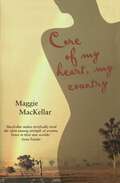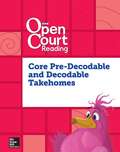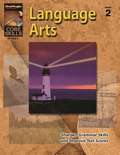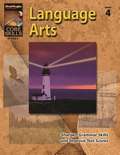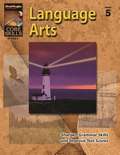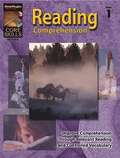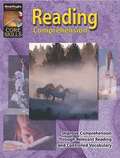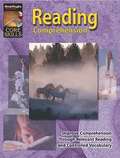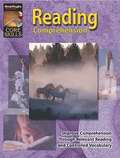- Table View
- List View
Core Decodable Takehomes, Blackline Masters, Level 1, Book 1 [Grade 1]
by Sra Mcgraw-HillNIMAC-sourced textbook
Core Knowledge Language Arts, Grade 1, Domain 10: A New Nation, American Independence, Tell It Again!™ Flip Book
by Core Knowledge Foundation Amplify Inc.NIMAC-sourced textbook
Core Knowledge Language Arts, Grade 1, Domain 2: The Human Body, Tell It Again!™ Flip Book
by Core Knowledge Foundation Amplify Inc.NIMAC-sourced textbook
Core Knowledge Language Arts, Grade 1, Domain 3: Different Lands, Similar Stories, Tell It Again!™ Flip Book
by Core Knowledge Foundation Amplify Inc.NIMAC-sourced textbook
Core Knowledge Language Arts, Grade 1, Domain 4: Early World Civilizations, Tell It Again!™ Flip Book
by Core Knowledge Foundation Amplify Inc.NIMAC-sourced textbook
Core Knowledge Language Arts, Grade 1, Domain 5: Early American Civilizations, Tell It Again!™ Flip Book
by Core Knowledge Foundation Amplify Inc.NIMAC-sourced textbook
Core Knowledge Language Arts, Grade 1, Domain 6: Astronomy, Tell It Again!™ Flip Book
by Core Knowledge Foundation Amplify Inc.NIMAC-sourced textbook
Core Knowledge Language Arts, Grade 1, Domain 7: The History of the Earth, Tell It Again!™ Flip Book
by Core Knowledge Foundation Amplify Inc.NIMAC-sourced textbook
Core Knowledge Language Arts, Grade 1, Domain 9: Fairy Tales, Tell It Again!™ Flip Book
by Core Knowledge Foundation Amplify Inc.NIMAC-sourced textbook
Core Knowledge Language Arts, Grade 2, Unit 3, Workbook
by Core Knowledge Foundation Amplify Inc.NIMAC-sourced textbook
Core Knowledge Language Arts, Grade 2, Unit 4, Workbook
by Core Knowledge Foundation Amplify Inc.NIMAC-sourced textbook
Core Knowledge Language Arts, Grade 2, Unit 6 Reader: The War of 1812
by Core Knowledge Foundation Amplify Inc.NIMAC-sourced textbook
Core Of My Heart, My Country
by Maggie MacKellarWhen Georgiana Molloy gave birth on the beach at Augusta in 1830 with boxes of her possessions lying where they'd landed, she was one of the many women who literally had to remake their homes out of the broken bones of their past. In this passionate book Maggie MacKellar tells the stories of women on the frontier in Canada and Australia who ventured out in bonnets and petticoats to collect seeds, who abandoned sidesaddles to ride in the mountains, who risked their reputations to climb mountains—and beyond this it tells of the risky business of women who put their lives on the page to claim the importance of their experience. Core of My Heart, My Country weaves together experience and insight from women who lived and wrote in different landscapes, in different climates and in different eras. It is a provocative and remarkable encounter with buried stories and persistent myths.
Core Predecodable And Decodable 4-color Takehome, Grade K: Open Court Reading (Imagine It)
by McGraw-Hill Education StaffEach story supports instruction in new phonics elements and incorporates elements and high frequency words that have been previously taught.
Core Skills: Language Arts, Grade 2
by Steck-VaughnLanguage Arts was developed to help your child improve the language skills he or she needs to succeed. The book emphasizes skills in the key areas of grammar, punctuation, vocabulary, writing, and research. The lessons included in the book provide many opportunities for your child to practice and apply important language and writing skills. These skills will help your child excel in all academic areas, increase his or her scores on standardized tests, and have a greater opportunity for success in his or her career.
Core Skills: Language Arts, Grade 4
by Steck-VaughnLanguage Arts was developed to help your child improve the language skills he or she needs to succeed. The book emphasizes skills in the key areas of grammar, punctuation, vocabulary, writing, and research. The more than 100 lessons included in the book provide many opportunities for your child to practice and apply important language and writing skills. These skills will help your child excel in all academic areas, increase his or her scores on standardized tests, and have a greater opportunity for success in his or her career.
Core Skills: Language Arts, Grade 5
by Steck-VaughnLanguage Arts was developed to help your child improve the language skills he or she needs to succeed. The book emphasizes skills in the key areas of grammar, punctuation, vocabulary, writing, and research. The more than 100 lessons included in the book provide many opportunities for your child to practice and apply important language and writing skills. These skills will help your child excel in all academic areas, increase his or her scores on standardized tests, and have a greater opportunity for success in his or her career.
Core Skills: Language Arts, Grade 6
by Steck-VaughnLanguage Arts was developed to help your child improve the language skills he or she needs to succeed. The book emphasizes skills in the key areas of grammar, punctuation, vocabulary, writing, and research. The more than 100 lessons included in the book provide many opportunities for your child to practice and apply important language and writing skills. These skills will help your child excel in all academic areas, increase his or her scores on standardized tests, and have a greater opportunity for success in his or her career.
Core Skills: Language Arts, Grade 7
by Steck-VaughnLanguage Arts was developed to help your child improve the language skills he or she needs to succeed. The book emphasizes skills in the key areas of grammar, punctuation, vocabulary, writing, and research. The more than 100 lessons included in the book provide many opportunities for your child to practice and apply important language and writing skills. These skills will help your child excel in all academic areas, increase his or her scores on standardized tests, and have a greater opportunity for success in his or her career.
Core Skills: Language Arts, Grade 8
by Steck-VaughnThe book emphasizes skills in the key areas of grammar, punctuation, vocabulary, writing, and research.
Core Skills: Reading Comprehension, Grade 1
by Steck-VaughnWelcome to the Steck-Vaughn Core Skills: Reading Comprehension series! You have selected a unique book that focuses on developing your child's comprehension skills, the reading and thinking processes associated with the printed word. Because this series was designed by experienced reading professionals, your child will have reading success as well as gain a firm understanding of the necessary skills outlined in national standards. The stories are comprised of words carefully chosen from the Doich Basic Sight Vocabulary and the Kucera-Francis word list. Words that appear most frequently in primary reading basal series were also used. For stories 1--16 (Part One), this vocabulary list includes every word used in the stories. For stories 17-34 (Part Two), this vocabulary list includes the words that are introduced as new vocabulary and defined.
Core Skills: Reading Comprehension, Grade 2
by Steck-VaughnWelcome to the Steck-Vaughn Core Skills: Reading Comprehension series! You have selected a unique book that focuses on developing your child's comprehension skills, the reading and thinking processes associated with the printed word.
Core Skills: Reading Comprehension, Grade 3
by Steck-VaughnWelcome to the Steck-Vaughn Core Skills: Reading Comprehension series! You have selected a unique book that focuses on developing your child's comprehension skills, the reading and thinking processes associated with the printed word. The stories are comprised of words carefully chosen from the Dolch Basic Sight Vocabulary and the Kucera-Francis word list. Words that appear most frequently in primary reading basal series were also used. This vocabulary list does not include every word students are expected to read in the stories, but rather is a list of words that are introduced as new vocabulary and defined.
Core Skills: Reading Comprehension, Grade 4
by Steck-VaughnWelcome to the Steck-Vaughn Core Skills: Reading Comprehension series! You have selected a unique book that focuses on developing your child's comprehension skills, the reading and thinking processes associated with the printed word.

